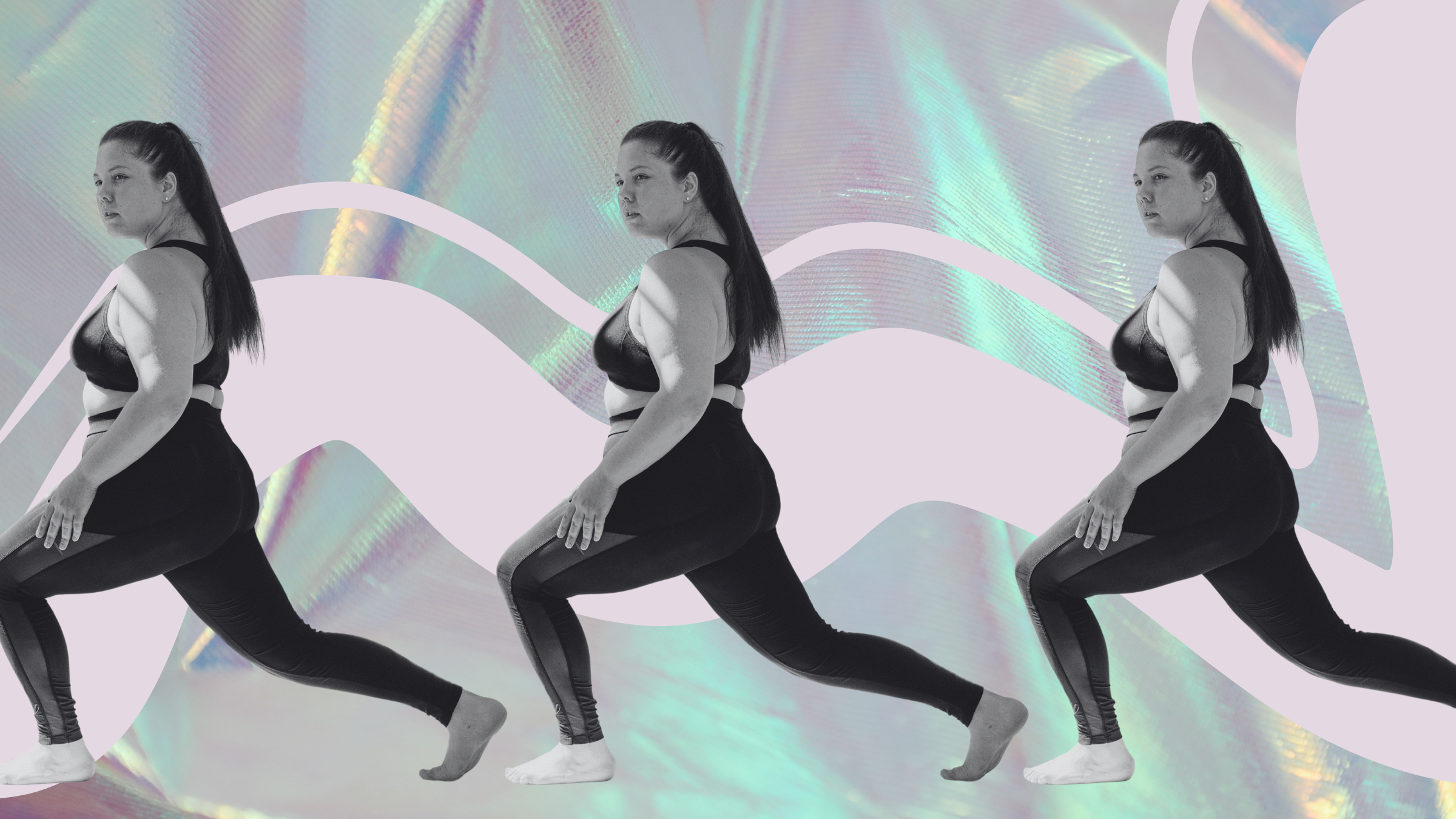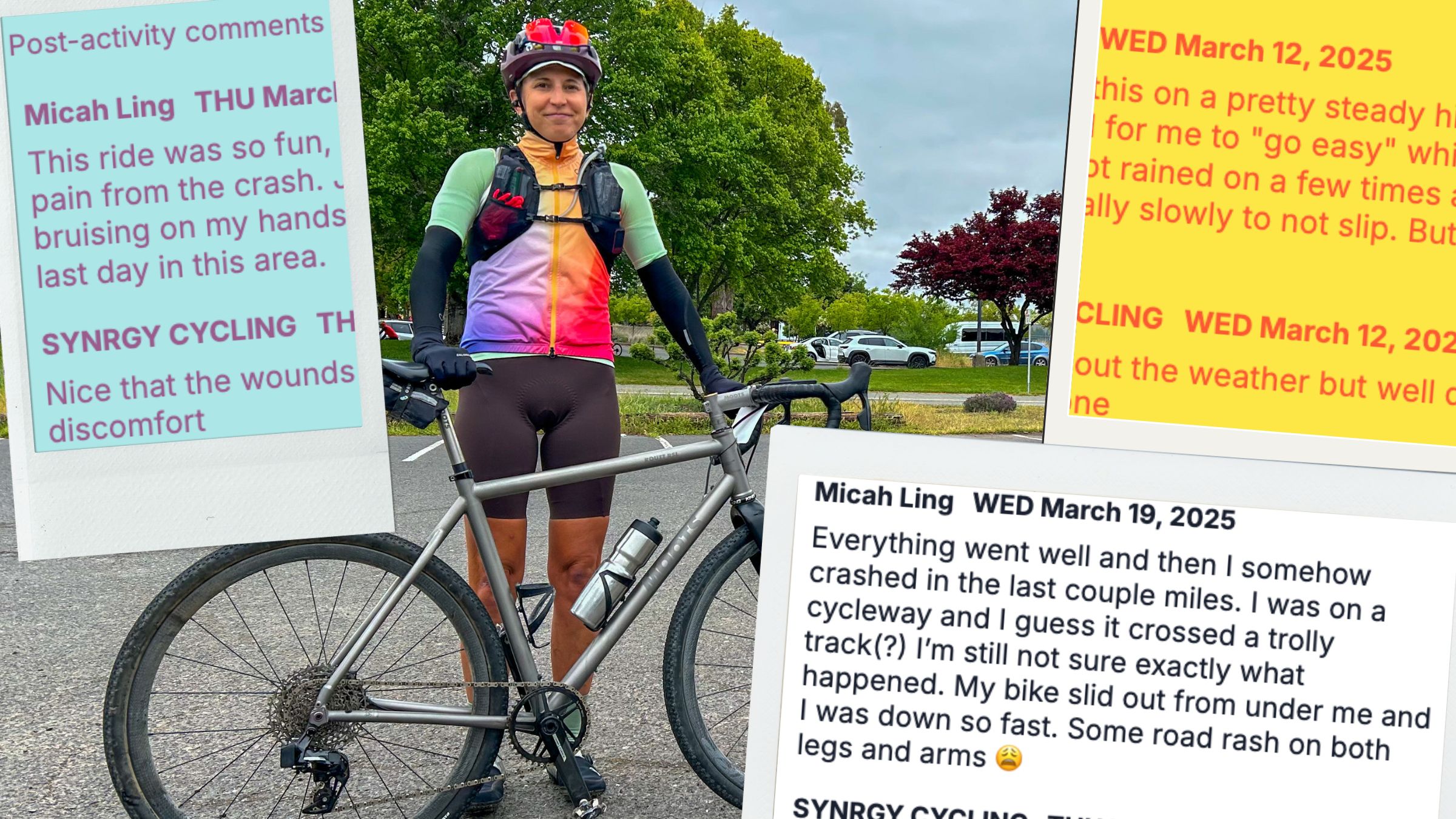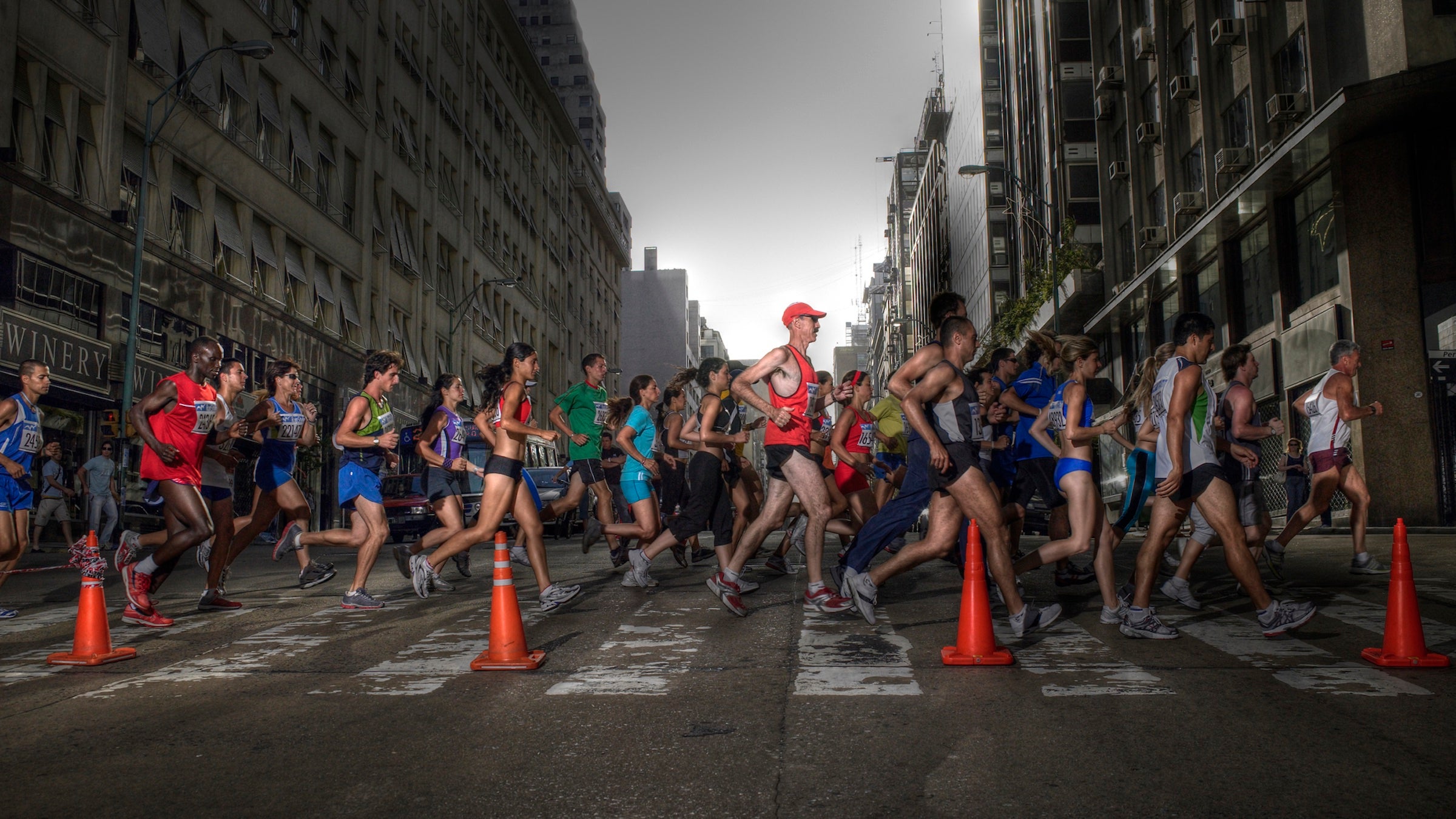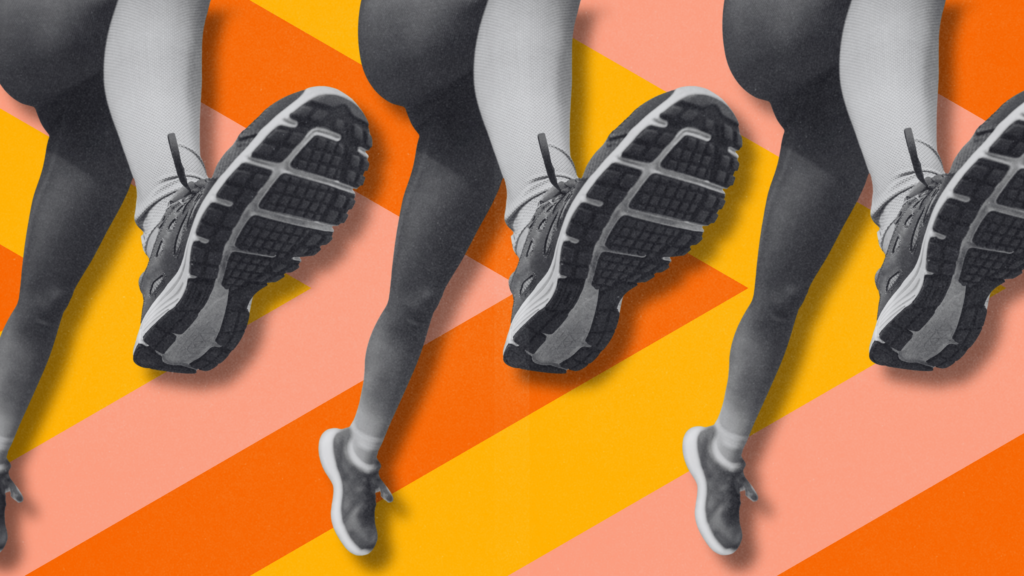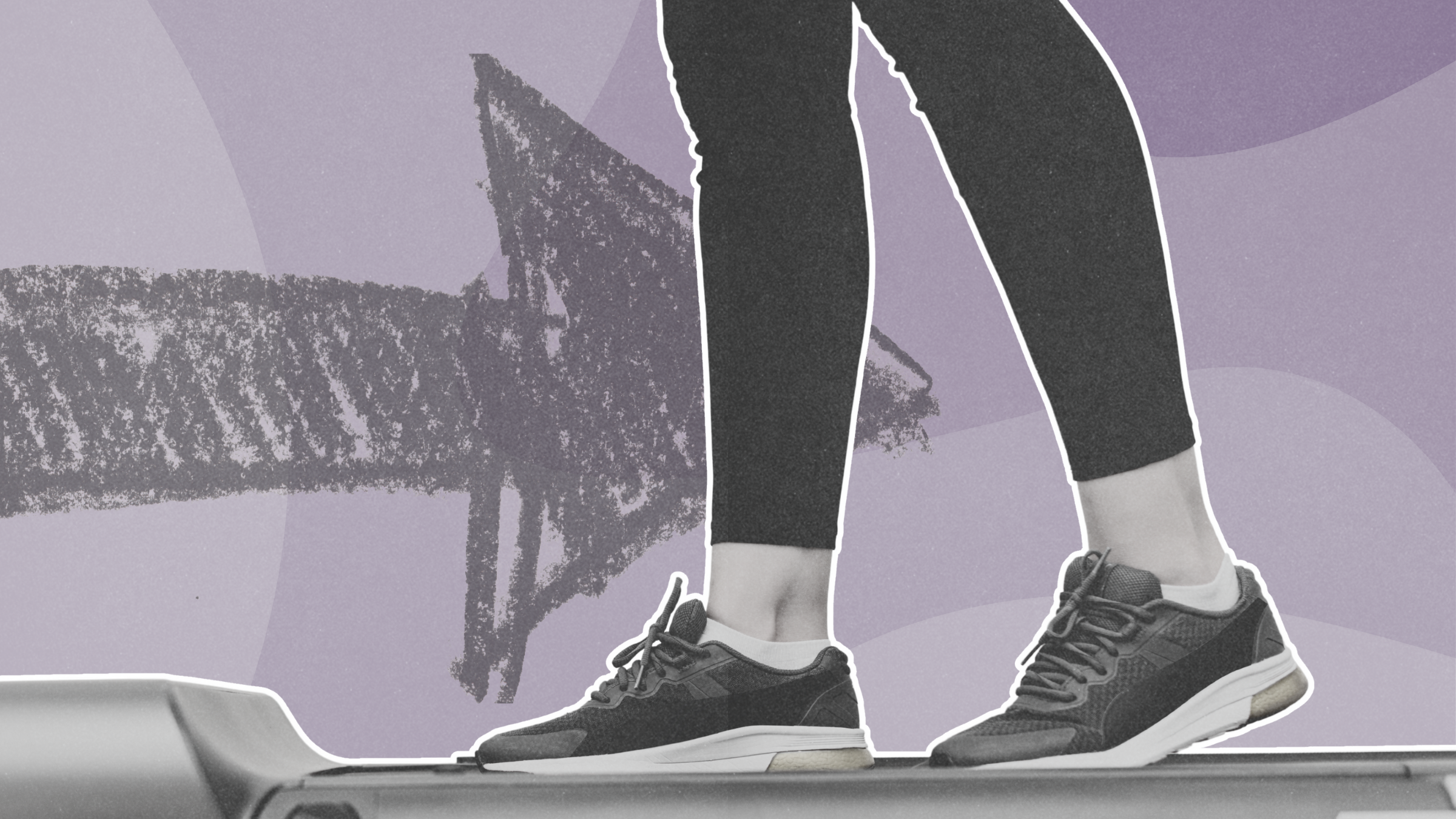If you buy through our links, we may earn an affiliate commission. This supports our mission to get more people active and outside.Learn about Outside Online's affiliate link policy
New research around muscle elasticity offers some surprising insights for marathon runners—and could explain how “super shoes” actually work
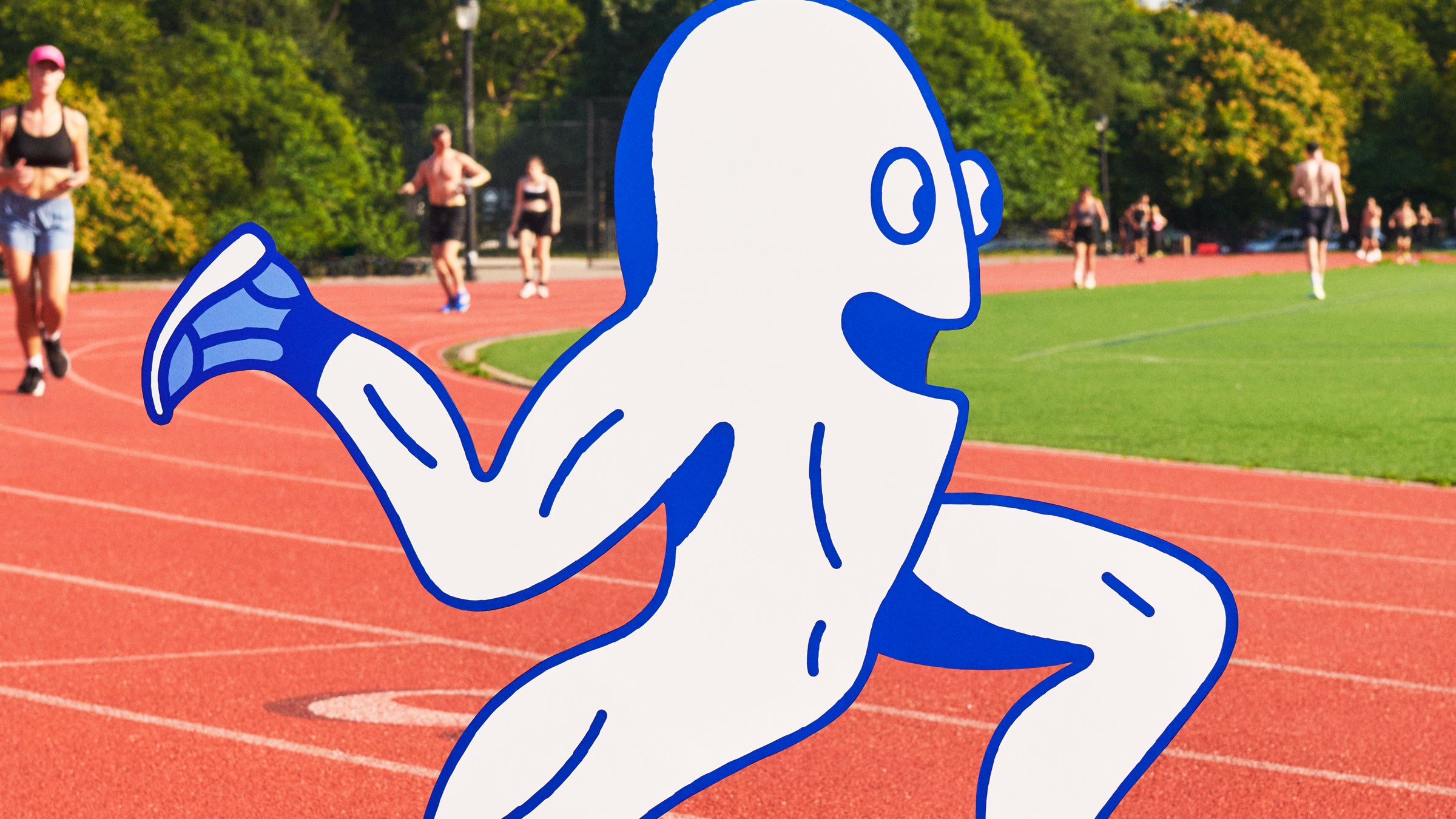
(Photo: Bela Borsodi, Illustration: Miguel Porlan)
Published September 6, 2025 03:10AM
Running is a spring-loaded sport—and no, I’m not just referring to the springy, carbon-plated super shoes that have swept the running world in recent years. Muscles and tendons themselves act like elastic bands, stretching with each stride and then springing back to help power the next. By some estimates, this recoil cycle provides about half the energy required for sustained running, meaning that the elasticity of your muscles is just as important as more commonly discussed parameters like VO₂ max. The problem: over the course of a long, hard run, the elastic starts to wear out.
Earlier this year, scientists from the Nike Sport Research Lab in Oregon published the first data on muscle elasticity in runners before and after a marathon. The results suggest a link between the elasticity of your quads and their ability to resist muscle damage, which is a crucial—perhaps even the most crucial—limitation to marathon running. The repetitive trauma of tens of thousands of steps causes microscopic damage to the muscle fibers in your legs, and previous research has found that this damage is the best predictor of how much you’ll fade late in the race—better even than fueling status, dehydration, or core temperature. So, how can you protect yourself against muscle damage during a race? By altering your muscle elasticity.
The link between the two has only recently been established, thanks to a relatively new technique called shear-wave elastography. By sending an ultrasound wave into the muscle and calculating how fast that wave travels, researchers can estimate the muscle’s elasticity. Specifically, they use a parameter called the elastic modulus—a material property like density or thermal conductivity—that tells you how much the muscle stretches when you pull it with a given force. It turns out that this elastic modulus is a sensitive gauge of muscle damage: the microtraumas that accumulate during a marathon cause the muscle to stiffen by the end of the race. And your baseline level of elasticity before the starting gun also matters, because springier muscles can likely absorb more footstrikes before they start to get damaged.
The new Nike study aimed to test this proposition. The lead author was Brett Kirby, one of the scientists behind the company’s Breaking2 marathon project with Eliud Kipchoge back in 2017, and the results appear in the European Journal of Applied Physiology. Kirby and his colleagues used shear-wave elastography to measure quad elasticity in eighty runners before and after the Chicago and Boston marathons. As expected, they found that faster and more experienced runners tended to start with a lower elastic modulus, corresponding to springier muscles, presumably because their legs had adapted to higher levels of training. The researchers also found that running a marathon made the muscles stiffer and harder to stretch, increasing elastic modulus by about 23 percent from start to finish—a red flag indicating accumulated muscle damage.
The researchers checked in with the runners 24, 48, and 72 hours after the race to assess soreness and what pace they figured they could run for two miles. Only about a third were recovered after 72 hours, and there was a clear link between elasticity changes and how long they needed to recover. The bigger the increase in elastic modulus—a proxy for muscle damage—during the race, the longer the runners needed before they could run normally again.
On the surface, this might seem obvious: the more you trash your legs, the longer it takes to recover. But connecting muscle damage to elasticity gives us a new lens to explore ways of reducing that damage. Nike is a shoe company, so you can guess what they were most curious about. The defining feature of the current generation of super shoes, along with the carbon-fiber plate, is a thick layer of light, bouncy midsole foam. Might this pillow of cushioning absorb some of the impacts of running, sparing the elasticity of the quad muscles? In a word, yes. Thirty-three of the 80 runners in Kirby’s group were wearing super shoes, and their elastic modulus increased by only 17 percent from marathon start to finish, compared to 31 percent in a speed-matched group wearing regular shoes. The big selling point of super shoes is that they enable you to run more efficiently as soon as you put them on. But these findings suggest they may also keep you on pace in the late miles of a marathon, and enable you to rack up more training week after week without trashing your legs.
There are other ways to improve elasticity and therefore harden your legs against muscle damage. The traditional advice includes training strategies like high mileage, long marathon-pace runs of up to 20 miles, downhill running, and lifting heavy weights. With shear-wave elastography, we now have a tool for testing how well each of these approaches works. For example, simply stretching your muscles seems to produce mixed results, which isn’t surprising; repeatedly pulling on an elastic band doesn’t make it springier. On the other hand, Japanese researchers showed that eight weeks of drop-jump workouts reduced calf muscle elastic modulus by 21 percent.
For now, though, the most compelling anti-muscle-damage data is for the shoes. That’s significant because super shoes have been enormously controversial. What does it mean for the history of the sport when virtually every record at every level is wiped from the books in the course of a few years? What does it say about the broader culture of running that so many of us are eager to shell out upward of $300 for a pair of shoes that promises to slice a few minutes off our times without any additional effort on our part?
These are hard questions to grapple with, but the elasticity data validates another perspective that, until now, has been mostly anecdotal. For a lot of runners, thickly cushioned super shoes feel better to run in. During and after races and training runs, they claim their legs feel less beat-up, and they’re quicker to bounce back for the next run. As someone who’s been running for more than three decades and hopes to keep running for at least three more, racing a tiny bit faster may have no grand cosmic meaning—but being able to walk down the stairs the morning after a marathon, or simply feeling fresh the day after a long run in the mountains? That’s a promise that puts a spring in my step.
For more Sweat Science, join me on Threads and Facebook, sign up for the email newsletter, and check out my new book The Explorer’s Gene: Why We Seek Big Challenges, New Flavors, and the Blank Spots on the Map.
Source link






